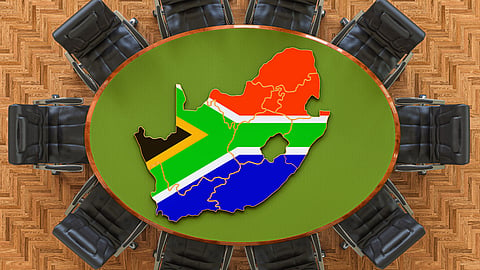Goldman Sachs sees SA’s ‘fragile’ GNU cabinet spurring growth
South African President Cyril Ramaphosa announced a new cabinet, including opposition politicians, to revive economic growth after the African National Congress lost its majority. Key figures include finance minister Enoch Godongwana and Democratic Alliance leader John Steenhuisen as agriculture minister. The government aims to tackle state inefficiency, power shortages, and inequality.
Sign up for your early morning brew of the BizNews Insider to keep you up to speed with the content that matters. The newsletter will land in your inbox at 5:30am weekdays. Register here.
Join us for BizNews' first investment-focused conference on Thursday, 12 September, in Hermanus, featuring top experts like Frans Cronje, Piet Viljoen, and more. Get insights on electricity and exploiting SA's gas bounty from new and familiar faces. Register here.
By S'thembile Cele and Ntando Thukwana
South African President Cyril Ramaphosa announced his new cabinet, allocating ministerial posts to business-friendly opposition politicians while retaining close ally Enoch Godongwana as finance minister and signaling his intent to revive anemic economic growth.
___STEADY_PAYWALL___

